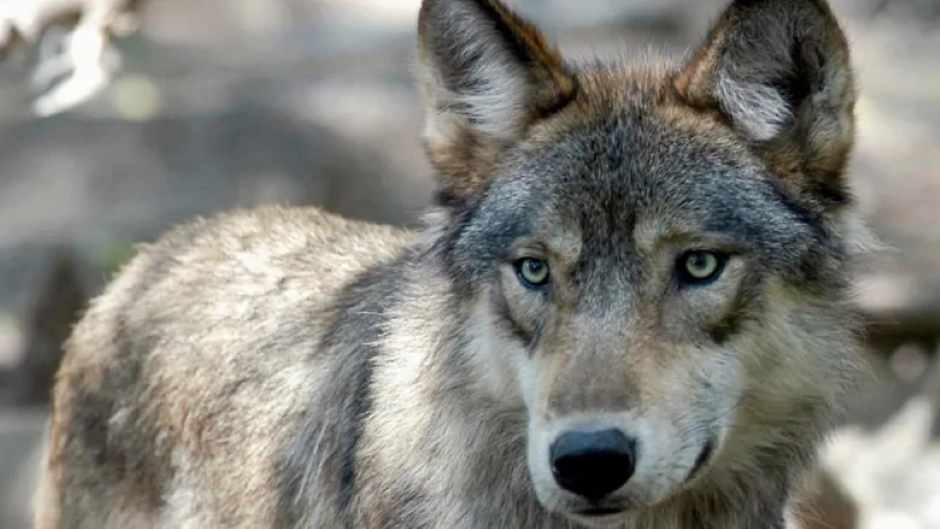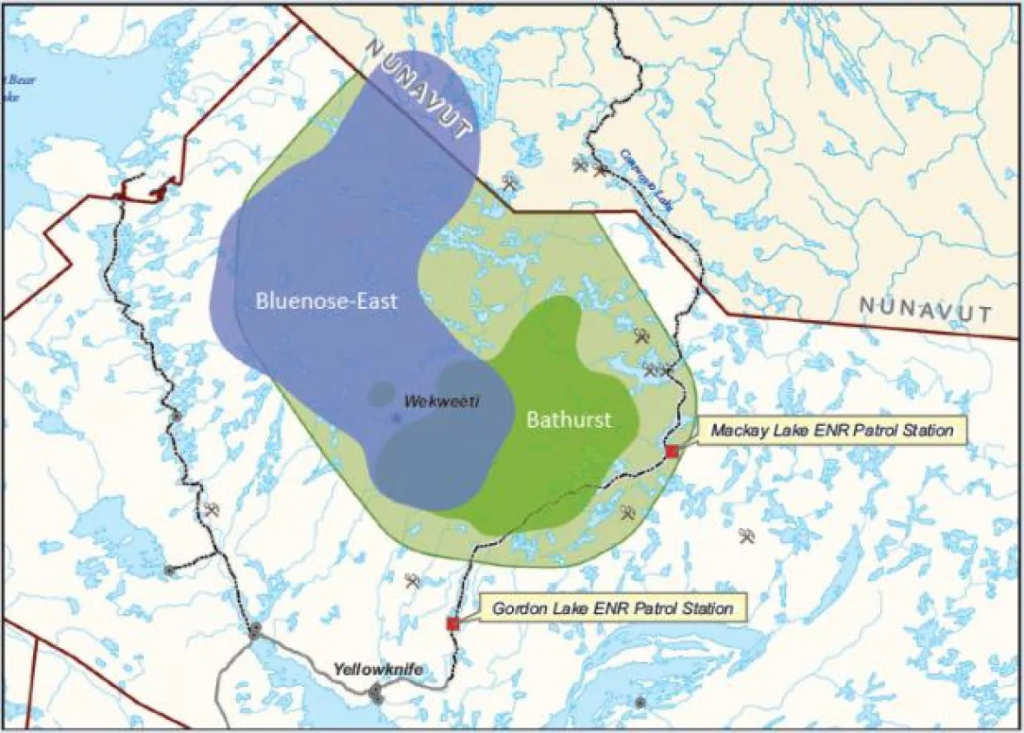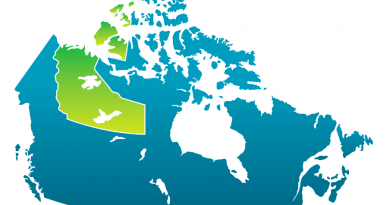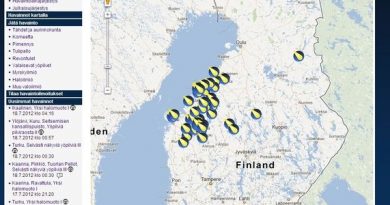In Canada’s Northwest Territories, harvesters will get more training to kill wolves, help caribou population

The government of the Northwest Territories and the Tłı̨chǫ government are planning to give more training to people interested in harvesting wolves on the winter ranges of the Bathurst and Bluenose-East caribou herds.
Earlier this year, the Wek’èezhìı Renewable Resources Board approved the territorial and Tłı̨chǫ governments’ plan to manage the wolf population as a pilot program. It centres around an incentive program for harvesters, who can qualify for at least $1,200 per wolf kill.
Wolves are known to be one of the key predators of the Bathurst and Bluenose-East caribou herds. Many researchers say caribou numbers are at a record low, so wildlife conservation officials and Indigenous governments have been working together to preserve the current numbers.
This week, the territorial and Tłı̨chǫ governments put forth their final management plan for review by the resources board for 2021 to 2024.
Getting more people on the land
There aren’t many changes from the initial plan proposed earlier this year, said John Nishi, technical advisor for the Tłı̨chǫ government, in a press briefing Thursday.
But he said the revised plan includes more details about what harvesters need to be successful and how the governments can help with that.
Tammy Steinwand-Deschambeault, director of culture and lands protection with the Tłı̨chǫ government, says it’s bolstering its workshops for harvesters, so they know how to best hunt the wolves. The governments also hope to better track the animals for harvesters and provide them with some tools, like skinning knives, so they can complete the harvest themselves.
Steinwand-Deschambeault also says people are learning how to harvest the wolves in a culturally appropriate way; she says for many people living in nearby communities, it’s important that very little blood leaks from the animal. She says that can help ensure the wolves won’t come to the communities.

Harvesters are also learning how to best set a snare and how to prepare a pelt, she added.
The governments also want to make sure the information they collect from the hunters over time is “consistent, detailed (…) so we can really understand the effort they’ve taken to hunt wolves,” Nishi says.
Right now, there is one known wolf harvester in all the Tłı̨chǫ communities, Steinwand-Deschambeault says. But the Tłı̨chǫ government wants to change that and get more people out on the land.
It hopes the additional training and workshops will help make that happen.
‘Not that many wolves on a huge range’
According to the territorial government, there are 49 wolves on the Bathurst winter range, and 121 on the Bluenose-East range.
The plan is to reduce those numbers by 60 to 80 per cent.
“Not that many wolves on a huge range,” said Brett Elkin, assistant deputy minister for the Department of Environment and Natural Resources (ENR), in the briefing. He says where the wolves are located plays a huge part in harvesters’ success.
According to Robert Mulders, a carnivore biologist for ENR who was also part of the briefing, the Bathurst herd was far away from the Tibbitt to Contwoyto winter road northeast of Yellowknife this season, which meant so were the wolves.
He says some were heading into boreal areas with deep snow, making it that much harder to catch the wolves.
This year, the territorial government says harvesters killed 31 wolves in the Bathurst range and 54 in the Bluenose-East range — 63 and 45 per cent of the wolves in those areas, respectively. To reach the 60 to 80 per cent goal, the territorial government shot the rest of the necessary wolves in the Bluenose-East range via air.
Related stories from around the North:
Canada: Canadian Gwich’in leaders renew calls to oppose drilling in Alaska Arctic wildlife refuge, CBC News
Greenland/Denmark: Greenland and Denmark finalize cooperation agreement on marine pollution response, Eye on the Arctic
Finland: Miners hunting for metals to battery cars threaten Finland’s Sámi reindeer herders’ homeland, Yle News
Iceland: Arctic Science Ministerial postponed to 2021 due to COVID-19, Eye on the Arctic
Norway: Climate change hits back at Svalbard, coal mine flooded by melting glacier in Norway, The Independent Barents Observer
Russia: Record-warm Arctic summer fatal to wild reindeer in Russia, say environmentalists, The Independent Barents Observer
Sweden: Extra billions to SAS – but with stricter climate requirements, Radio Sweden
United States: Conservation groups sue government over Alaska mining road, The Associated Press



